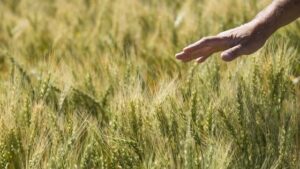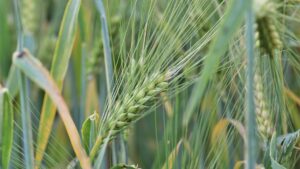Montana State University Professor of Plant Sciences and Plant Pathology Luther Talbert was recently named the Crop Science Society of America’s 2016 fellow, which is the highest recognition the society bestows.
To receive the recognition, members of the Crop Science Society of America nominate worthy colleagues based on their professional achievements and meritorious service. Only three percent of the society’s active and emeritus members have been elected fellow.
“Throughout his career, Luther has made tremendous contributions to the fields of crop science and plant genetics that have made a multi-million dollar difference in Montana agriculture,” says John Sherwood, department head of the MSU College of Agriculture’s Department of Plant Sciences and Plant Pathology. “As a teacher, scientist and colleague, he’s highly deserving of one of the top awards in the plant science community. We’re proud to congratulate him on this unique honor.”
The annual awards are presented for outstanding contributions to agronomy through education, national and international service and research. The award was announced at the society’s annual meeting, held in November in Phoenix, Arizona.
“Though my name is on the award, it is really an honor directed to all the students and staff that have worked on the spring wheat breeding program over the years,” says Talbert. “It also recognizes all of our great supporters on campus and at the research centers around Montana.”
Talbert’s work in the MSU spring wheat breeding programs has resulted in new spring wheat varieties for Montana grain farmers that are specifically adapted to Montana growing conditions. Many varieties are resistant to current and emerging diseases and pests that threaten Montana’s agricultural community. In addition, MSU’s wheat breeding programs through the Montana Agricultural Experiment Station have made a $500 million impact in $1 billion of wheat sold by Montana farmers in 2016, according to the United States Department of Agriculture.
According to the USDA, Montana producers planted 2.3 million acres of spring wheat for harvest in 2016, of which 18.8 percent was the MAES-developed Vida, a hard, red spring wheat, which Talbert developed. This is the sixth year in a row that Vida has been the state’s leading spring wheat variety planted, according to the Montana field office of the USDA’s National Agricultural Statistics Service. The field office also confirmed that Montana is the second-largest spring wheat producer in the country.
Talbert said MSU breeding specialists continue to work closely with the state’s producers to determine, and then meet, their needs for high-yielding, high-protein, pest-resistant varieties that are adapted to Montana’s climate.
Talbert received bachelor’s and master’s degrees from North Carolina State University and a doctorate from the University of Wisconsin. He is responsible for the development of hard red spring wheat cultivars that have been widely grown throughout Montana. His genetics research program focuses on traits important in the cultivar development, including traits associated with reliable grain yield under dryland production and traits associated with resistance to endemic insects.
Talbert has published over 100 articles in peer-reviewed journals and served as technical editor and associate editor for the journal Crop Science. Since 1988, he has taught graduate and undergraduate courses in plant breeding, genetics and introductory biology and has provided training for graduate students.
Source: MSU













